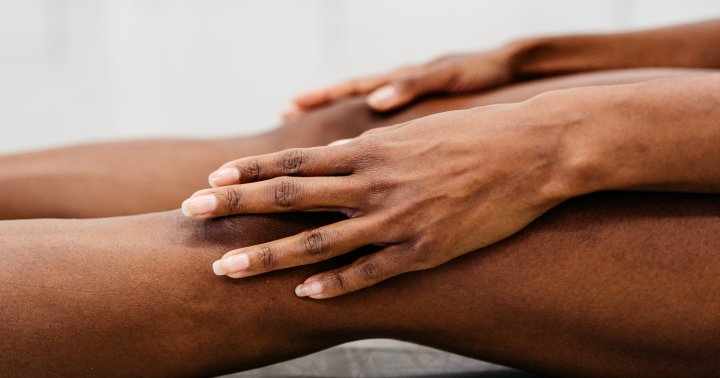Low-Back Pain? Research Says This Is Your Best Bet For Movement
Bungee exercise, anyone?

Advertisement
This ad is displayed using third party content and we do not control its accessibility features.

Beauty & Health Editor
Beauty & Health Editor
Hannah Frye is the Beauty & Health Editor at mindbodygreen. She has a B.S. in journalism and a minor in women’s, gender, and queer studies from California Polytechnic State University, San Luis Obispo. Hannah has written across lifestyle sections including beauty, women’s health, mental health, sustainability, social media trends, and more. She previously worked for Almost 30, a top-rated health and wellness podcast. In her current role, Hannah reports on the latest beauty trends and innovations, women’s health research, brain health news, and plenty more.
Image by Jess Craven / Stocksy September 15, 2024 Caricatures often portray older individuals as hunched-over figures clutching their lower backs, unfortunately highlighting a common area of pain that many experience as they age in real life. With the stereotype, there's a prevailing assumption that lower-back pain sentences individuals to a life with fewer workouts or no exercise at all. However, a recent study challenges this notion, suggesting that certain exercises can actually alleviate back pain. Here are the key findings and essential considerations for relieving back pain through exercise—and yes, it's possible.
The 4 best exercises for low-back pain
This review encompassed 75 randomized controlled trials with a total of 5,254 participants, providing significant data for consideration.
Specifically, tai chi and yoga were found to be most effective for pain management, while yoga and core stabilization exercises showed better improvement in physical function compared to conventional rehabilitation methods.
A common thread among these exercises is the focus on mobility and flexibility rather than all-out muscle gains like weight lifting. Many of them, like tai chi, for example, can improve muscle strength and endurance without applying too much pressure to the lower back.
Sling exercise, often referred to as bungee workouts, is a particularly interesting and often underrated way to clock some movement without too much impact. Plus, it's a fun way to shake it up if you're used to traditional weight-based or cardio workouts.
"Sling exercise activates the core muscle group by suspending part of the body and placing the body in an unstable state, improving muscle imbalance, improving the control ability of the neuromuscular system, enhancing the stability of the lumbar spine, and improving physical function," the study notes.
This is a large study, especially for such a niche (the best exercises for lower back pain), but researchers believe that more large-scale studies have to be conducted to make definitive recommendations.
Where does this leave you? Know that there are a few options for soothing exercises that have been shown to provide relief in clinical studies.
Still, even lower-back pain has great variance, and what workout (if one at all) is best for you will depend on your unique situation. How your pain started, the severity, and any other health concerns can shape your ideal workout routine quite differently from someone else's, even if you both struggle with similar pain.
When in doubt, consult your physician. They may be able to help you identify the best route forward and even suggest unique forms of rehabilitation that can be completed in conjunction with exercise, not always choosing one or the other.
The takeaway
A review study suggests that tai chi, yoga, Pilates, and sling exercise can be particularly beneficial for reducing low-back pain when compared to conventional rehabilitation.
Still, back pain is unique, and the best exercise plan for you will depend on a host of other factors, so consult your physician before committing to any one routine. And remember: Even while your muscles change with age, there are ways to support strength longevity—here, a good place to start.

 JimMin
JimMin 































